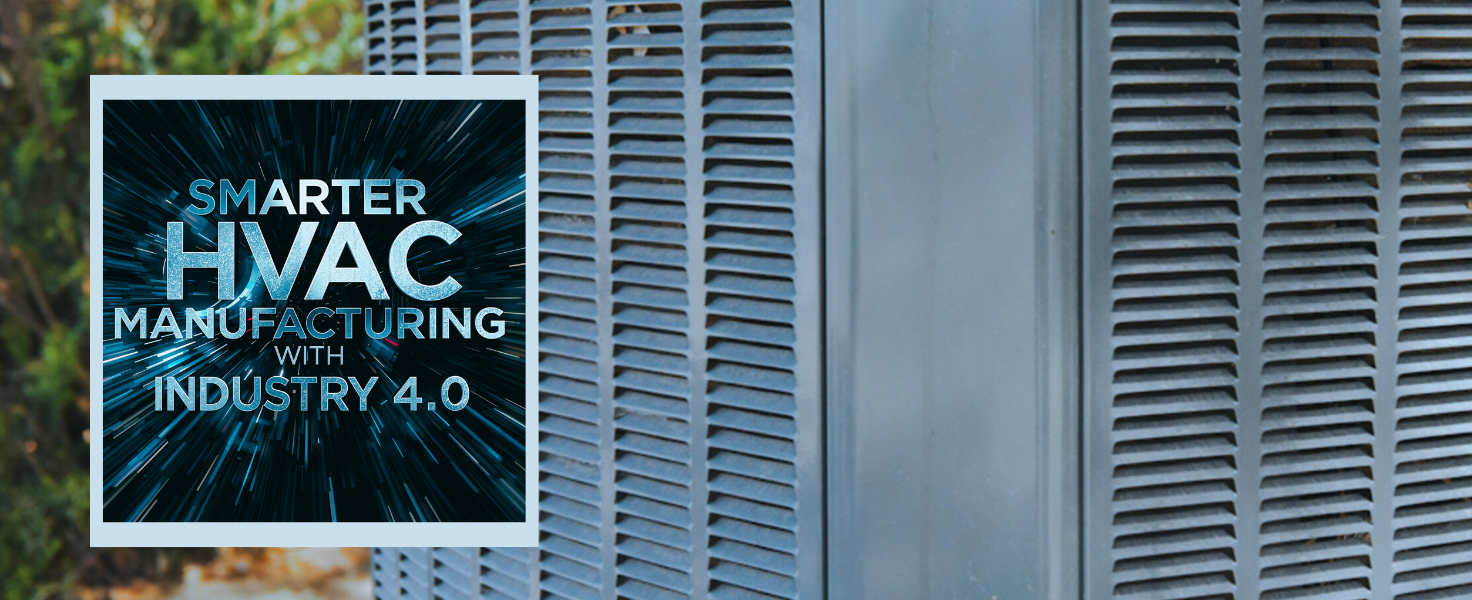Digitization Increases Quality, Efficiency, and Growth in HVAC Manufacturing
The HVAC industry is at a turning point. Increasing customization demands, stricter compliance requirements, and labor shortages are pushing manufacturers to find new ways to work smarter, not harder. Traditional methods such as paper-based instructions, manual quality checks, and disconnected data systems are struggling to keep up.
The good news? Industry 4.0 and digital manufacturing solutions are reshaping HVAC production floors, helping manufacturers cut costs, speed up output, and improve quality, all at the same time.
The HVAC Manufacturing Challenge
Even the best-run HVAC facilities face these ongoing challenges:
- Complex assemblies with high variability – Units often have dozens of configurable options, increasing the risk of assembly errors.
- Strict compliance and quality standards – Energy efficiency certifications, safety requirements, and warranty commitments demand airtight documentation.
- Labor shortages and high turnover – New hires require extensive training, slowing production.
- Supply chain unpredictability – Delays in parts sourcing mean lines need to adapt quickly without sacrificing quality.
Smarter HVAC Manufacturing with Industry 4.0
Are legacy processes slowing you down? Modernize your operations with Industry 4.0 technology to overcome growing manufacturing challenges. When you’re performing complex, variable assembly processes, AI and robotics are not going to replace your human workforce. Instead, support and enable your workers with digital solutions.
As an example, a manufacturing solution from Matrix has helped a major HVAC manufacturer optimize operations at its flagship plant in Europe. Results include higher quality and efficiency as well as flexibility and adaptability to meet changing business demands. Get the full story here.
According to the lead process systems engineer at the plant, the Matrix solution manages all assembly processes and interfaces with specialized equipment such as vacuum, charge, leak detection, and run-test machines. The system creates work orders for each production line based on schedule, delivering digital work instructions to guide operators at each station. Error-proofing techniques in the system include part verification scans, traceability scans, torque control, and seamless integration with PLC-controlled systems such as conveyors and testing equipment.
Step 1 for smarter HVAC manufacturing? Digitization, which can include:
Digital Work Instructions: Replace bulky binders and faded diagrams with interactive, visual, step-by-step instructions that adapt to each build configuration. This reduces training time, standardizes output, and cuts error rates dramatically.
Connected Quality Checks and Functional Testing: Automated, in-process quality verification ensures errors are caught and corrected immediately—before they cause rework or warranty claims.
Automated Data Collection: Digital solutions connect to sensors and devices to track cycle times, torque readings, and inspection results without manual entry. This enables accurate root-cause analysis, continuous improvement, and automated records and reports.
Integrated Traceability Systems: Every part, test result, and inspection is logged automatically, creating a complete digital history for each unit. This is essential for compliance, recalls, and customer trust.
Why Now? The Competitive Edge Requires Digitization
The HVAC market is growing, but so is competition. The industry is past the stage of early adoption. Companies are using digital manufacturing tools to:
- Handle more complex, customized orders without slowing production
- Error-proof operations to reduce warranty and recall costs – Explore our blog, How to Reduce Warranty and Recall Costs in HVAC Manufacturing.
- Stay ahead of regulatory compliance requirements
- Build a culture of continuous improvement through data visibility
- Improve employee retention by making work easier and more engaging
Taking Steps on the Digital Journey
You don’t have to digitize your entire factory overnight. For example, at the HVAC manufacturer’s flagship plant in Europe, the initial project began with a single line and expanded to cover 11 production lines.
Best practice steps to take include:
- Identify a high-variability assembly line with frequent rework.
- Collect baseline metrics: error rates, cycle times, training duration.
- Pilot digital work instructions and connected quality checks for 3–6 months.
- Compare the data to demonstrate ROI and secure buy-in for scaling.
The future of HVAC manufacturing is digital. By combining clear instructions, real-time quality control, and connected data systems, you can make your workforce more effective and deliver higher-quality, compliant units faster.
Ready to explore digital solutions for your HVAC production floor? Contact Matrix Automation, and let’s discuss your first pilot project and see what’s possible.


